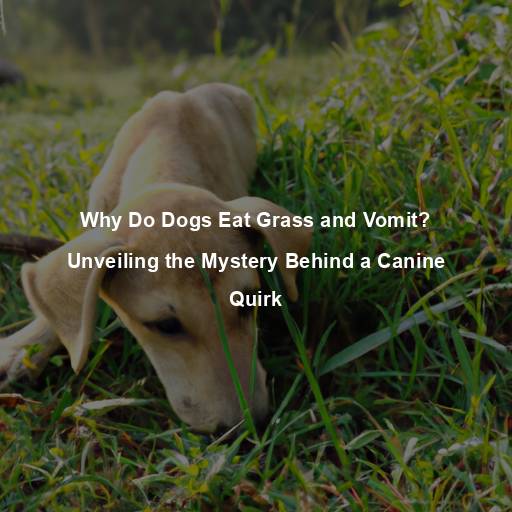Why Dogs Can’t Eat Chocolate: The Dangerous Delicacy
Last Updated on November 17, 2023 by Evan
Contents
- 1 The Tempting Treat: Chocolate and Dogs
- 1.1 Understanding the Culprit: Theobromine
- 1.2 The Dangers Unleashed: Symptoms of Chocolate Poisoning
- 1.3 The Deadly Dose: Chocolate Toxicity Levels
- 1.4 Canine Sensitivity: Factors Influencing the Reaction
- 1.5 Immediate Action: What to Do if Your Dog Eats Chocolate
- 1.6 Preventive Measures: Keeping Chocolate Out of Paw’s Reach
- 1.7 A Lifesaving Lesson: Chocolate and Canine Health
- 1.8 Chocolate Varieties: Understanding the Differences
- 1.9 Exploring the Effects: How Theobromine Affects Dogs
- 1.10 Shedding Light on Chocolate Toxicity: Factors to Consider
- 1.11 Hidden Hazards: Other Toxic Foods for Dogs to Avoid
- 2 FAQs: Why can’t dogs eat chocolate?
The Tempting Treat: Chocolate and Dogs
For centuries, chocolate has captivated our senses, offering a fleeting respite in a universe filled with saccharine delights. Yet, amidst this confectionary symphony lies a dire warning for our furry companions. The prohibition of chocolate for dogs is almost a household dictum, but have we ever taken a moment to ponder the enigma behind this decree? In this captivating exposé, we shall plunge into the depths of scientific revelation and expose the perilous ramifications that chocolate can inflict upon our beloved canines.
Understanding the Culprit: Theobromine
The key component in chocolate that poses a threat to dogs is theobromine, a naturally occurring compound found in cocoa beans. While humans can metabolize theobromine relatively easily, dogs lack the necessary enzymes to break it down efficiently. As a result, theobromine can accumulate in their system, leading to a toxic buildup.
The Dangers Unleashed: Symptoms of Chocolate Poisoning
It’s no secret that chocolate and dogs are a toxic combination. Once those four-legged furballs gobble up that delicious treat, theobromine, like an unexpected guest, barges into their system, wreaking havoc on their little bodies. The magnitude of chaos that unfolds can be as unpredictable as a rollercoaster ride, with factors like the dog’s size, the type of chocolate, and the quantity consumed determining the degree of mayhem. Beware the warning signs of this bittersweet poisoning dance:
We are astounded by the astonishing effect that theobromine has on our furry friends’ digestive system. Just a small amount of this compound can trigger a whirlwind of tummy trouble, resulting in a delightful combination of vomiting and diarrhea. It’s absolutely mind-boggling how such an innocent-sounding substance can cause such chaos within our canine companions.
When it comes to our canine companions, sometimes they can’t help but let their energy levels run wild. Restlessness, hyperactivity, and a noticeable surge in vitality are all telltale signs that your furry friend may be feeling a little extra feisty. Don’t be perplexed if you notice them bounding around with an unrivaled sense of vigor – it’s just their way of reminding us that life is meant to be lived at full speed.
One cannot underestimate the impact of theobromine’s stimulating properties on the human heart, which can catapult one’s heart rate into a frenzy, causing a whirlwind of cardiovascular implications that leave us pondering the gravity of the situation. This surge in cardiac activity may even pave the way for more profound cardiovascular complications, leaving us bewildered by the intricate dance between theobromine and our vital organ.
– Muscle Tremors and Seizures: In some cases, dogs may experience muscle tremors or even seizures due to the toxic effects of theobromine on their nervous system.
Did you know that indulging in too much chocolate can actually cause a sudden increase in your body temperature? This phenomenon is known as hyperthermia and it can be quite alarming, not to mention potentially life-threatening if not treated promptly. So, next time you find yourself reaching for that extra piece of chocolate, remember to exercise moderation and keep an eye on your body’s temperature. Stay cool, and stay safe!
The Deadly Dose: Chocolate Toxicity Levels
When indulging in a sweet treat, it’s important to be mindful of our furry friends’ well-being. Theobromine, a compound found in chocolate, can be toxic to dogs, but not all chocolates are created equal in terms of their dangerous potential. Dark chocolate and unsweetened baking chocolate pack a higher theobromine punch, while milk chocolate poses a slightly lower threat. Surprisingly, white chocolate contains minimal amounts of theobromine, making it a safer option for our canine companions.
Indulge in the velvety embrace of milk chocolate, a delectable treat that holds within its silky depths the captivating essence of theobromine. With a tantalizing range of 44-64 milligrams per ounce, this sumptuous confection invites you into a realm of delicious intrigue. Immerse yourself in the burst of flavor and the perplexing nuances of this decadent delight, a truly irresistible experience for the curious palate. Explore the enigmatic charm of milk chocolate and let its spellbinding allure awaken your senses.
Discover the enigmatic allure of dark chocolate, shrouded in a veil of perplexing richness. Delve into the enigmatic world of this indulgent treat that boasts a tantalizing range of 135-450 milligrams of theobromine per ounce. Embark on a journey of burstiness as you savor each nuanced bite, uncovering the secrets it holds within its velvety embrace. Experience the enigmatic allure of this cocoa-laden delight that leaves taste buds astounded and minds beguiled.
Get ready to indulge in the unexpected richness of baking chocolate, as each luscious ounce boasts an astonishingly high theobromine content, ranging from a mind-boggling 450 to an astonishing 750 milligrams. Brace yourself for an intense sensory journey as you surrender to the captivating burst of flavors that only baking chocolate can offer. Prepare to be perplexed by its astonishing potency and let yourself be whisked away on a tantalizing adventure with every delicious bite.
When it comes to our precious canine companions, we must be on high alert. Theobromine, a compound found in chocolate, possesses a tantalizing yet perilous effect on our furry friends. While the lethal dosage may seem distant, the harrowing truth is that even small amounts can lead to theobromine toxicity. Hence, it becomes imperative to shield our adorable companions from the allure of chocolate and ensure their safety at all costs.
Canine Sensitivity: Factors Influencing the Reaction
When it comes to the dangers of theobromine toxicity in dogs, there are various factors that can play a role in determining their susceptibility to chocolate poisoning. Understanding these factors is crucial for every dog owner to ensure the well-being of their furry companions. From the type of chocolate ingested to the size and breed of the dog, each variable adds a layer of complexity to this perplexing issue. By unraveling the intricacies of these influencing factors, we can empower ourselves to make informed decisions and protect our beloved pets from potential harm.
When it comes to the impact of theobromine, the size and weight of a dog play a crucial role. Smaller canine companions bear the brunt of this compound’s effects due to their petite frames and less efficient metabolism. It’s essential for dog owners to be aware of this perplexing reality and take appropriate precautions to safeguard their beloved four-legged friends.
– Individual Sensitivity: Just like humans, dogs can have varying levels of sensitivity to theobromine. Some may show signs of toxicity even after consuming small amounts, while others may tolerate it slightly better.
– Chocolate Amount and Type: The quantity and type of chocolate ingested play a crucial role in determining the severity of the dog’s reaction. The higher the theobromine content and the larger the quantity consumed, the greater the risk.
Immediate Action: What to Do if Your Dog Eats Chocolate
Sometimes, despite our best efforts, our furry friends find themselves in sticky situations – like accidentally gobbling up chocolate. It’s a perplexing scenario that can cause a lot of worry for pet owners. However, it’s crucial to stay calm and take swift action to lessen any potential harm. Here’s a comprehensive guide to what you should do if your dog finds themselves on an unexpected cocoa-filled adventure.
When your furry friend indulges in a chocolatey feast, it’s crucial to take a moment to assess the situation. Consider the type of chocolate in question, how much was devoured, and how long has passed since the feast began. Armed with these puzzling details, your trusted vet can evaluate the potential peril your pal may be facing.
2. Contact Your Veterinarian: Call your veterinarian or a pet poison control hotline for guidance tailored to your dog’s specific situation. They will provide professional advice based on the chocolate type, amount ingested, and your dog’s weight and health condition.
3. Monitor Your Dog: Observe your dog closely for any signs of chocolate poisoning, such as vomiting, diarrhea, restlessness, or abnormal behavior. Note down any changes to report to your veterinarian.
4. Do Not Induce Vomiting: Unlike some other substances, inducing vomiting is not recommended in cases of chocolate ingestion unless specifically instructed by a professional. It’s best to follow your veterinarian’s guidance.
5. Follow Medical Advice: If necessary, your veterinarian may recommend bringing your dog in for an examination or treatment. It’s crucial to comply with their instructions to ensure your furry friend receives the care they need.
Preventive Measures: Keeping Chocolate Out of Paw’s Reach
Prevention is always better than cure, and when it comes to chocolate and dogs, a proactive approach is key. Here are some preventive measures you can take to protect your canine companion:
- Secure Storage: Store all chocolate products in secure, elevated locations that are inaccessible to your dog. Remember that dogs can be quite resourceful when it comes to accessing tempting treats.
Keep your loved ones and guests informed about the potential dangers of dogs indulging in chocolate. It’s imperative to make sure that everyone in your home, as well as any visitors, comprehend the risks involved. Don’t hesitate to remind everyone to exercise caution and prevent the temptation of leaving chocolate unattended where a curious furry friend might encounter it.
Introducing a tantalizing array of alternative indulgences, pamper your beloved four-legged companion with delectable treats that are as safe and delightful as they are nutritionally sound. Explore the expansive trove of pet boutiques, where you’ll uncover a bountiful selection of canine-friendly delights, specially crafted to satiate every discerning palate without compromising their well-being. Welcome your furry friend to a world of canine cuisine that promises to entice and satisfy, ensuring their happiness and vitality with each delectable morsel.
Ensuring the safety and well-being of our furry friends is of utmost importance. It’s crucial to not overlook the potential dangers that chocolate wrappers can pose to our beloved dogs. By promptly and securely disposing of these wrappers, we can help prevent choking hazards and ensure a happy, healthy environment for our four-legged companions.
As the festive season approaches, it’s important to be vigilant when it comes to your adorable pet’s safety. With Halloween and Christmas just around the corner, temptations in the form of delectable chocolates and sweet treats will be aplenty. However, it’s crucial to keep an eye out for your furry companion and ensure they steer clear of these potentially dangerous goodies that could pose a risk to their health.
A Lifesaving Lesson: Chocolate and Canine Health
We all love our furry friends so much, and it’s only natural to want to share a little treat with them from time to time. But when it comes to chocolate, we have to be extra cautious. You see, dogs have a different metabolism than humans, and chocolate contains a substance called theobromine that can be harmful to them. So, while it may be tough to resist those puppy dog eyes, it’s important to keep chocolate out of their reach to prevent any mishaps.
Stay informed, stay vigilant, and keep the chocolate out of paw’s reach. Your dog’s well-being is worth every effort to protect them from this delicious yet dangerous treat. ## The Hidden Dangers: Lesser-Known Risks of Chocolate for Dogs
Chocolate Varieties: Understanding the Differences
Not all chocolate is created equal, and it’s essential to be aware of the varying levels of theobromine in different types of chocolate. Let’s take a closer look at the most common chocolate varieties and their potential risks for dogs:
Milk Chocolate
Milk chocolate is the most commonly consumed type of chocolate and is often found in candies, bars, and desserts. While it contains a lower concentration of theobromine compared to dark or baking chocolate, it can still be harmful to dogs, especially if ingested in large quantities.
Dark Chocolate
Dark chocolate, with its rich and intense flavor, contains a higher concentration of theobromine than milk chocolate. As a result, it poses a greater risk to dogs if consumed. Dark chocolate is often found in gourmet chocolates, baking goods, and certain candy bars.
Baking Chocolate
Indulging in the world of chocolate is a delightful experience, but let’s breeze through the perplexing knowledge about baking chocolate, which goes by several peculiar names like unsweetened or bitter chocolate. Brace yourselves for a burst of surprising information: this specific type of chocolate holds the crown for the highest theobromine content among its cocoa counterparts. While it may effortlessly elevate your culinary creations to new heights, it is of utmost importance that we lay bare the bitter truth: this dark delight can pose an alarming risk to our furry friends. Yes, dear readers, even a mere smidgen of this bitterness can unleash a storm of health concerns upon our canine companions.
Exploring the Effects: How Theobromine Affects Dogs
When it comes to theobromine, dogs and humans take a dramatically different journey. The fascinating realms of metabolism and sensitivity create a divergent experience for our four-legged companions. So, let’s embark on a captivating exploration of the unique effects that theobromine has on the intricate tapestry of a dog’s body. Prepare to be astounded, as we unravel the perplexing enigma that lies within our furry friends.
Central Nervous System
Theobromine acts as a stimulant on the central nervous system of dogs, leading to increased activity and restlessness. Dogs may become hyperactive, agitated, or exhibit unusual behaviors that deviate from their normal temperament.
Cardiovascular System
There’s been a lot of buzz surrounding theobromine consumption and its effects on our furry friends’ cardiovascular health. This compound has the potential to send their heart rates soaring, leaving them with fluttering sensations and possible cardiac complications. It’s crucial to bear in mind that pooches with pre-existing heart conditions might be dealing with an extra dose of vulnerability in this regard.
Gastrointestinal System
Chocolate can irritate the gastrointestinal system of dogs, leading to vomiting, diarrhea, and abdominal discomfort. In some cases, dogs may show signs of dehydration due to excessive fluid loss from vomiting and diarrhea. Prompt veterinary attention is crucial to prevent dehydration and further complications.
Nervous System
Did you know that theobromine, a compound found in chocolate, can have a detrimental impact on our furry friends? It has the ability to wreak havoc on a dog’s delicate nervous system, causing troubling symptoms like muscle tremors and even seizures. These distressing signs not only shake up our beloved pets, but also send their worried owners on a whirlwind journey to seek urgent medical assistance.
Shedding Light on Chocolate Toxicity: Factors to Consider
Several factors come into play when determining the severity of chocolate toxicity in dogs. These factors can influence how a dog’s body processes and reacts to theobromine:
Dog’s Size and Weight
The size and weight of a dog play a significant role in their ability to tolerate theobromine. Smaller dogs have a higher risk of experiencing adverse effects due to their lower body weight and less efficient metabolism.
Individual Sensitivity
Just as humans have different tolerances and sensitivities to various substances, dogs also exhibit variations in their ability to handle theobromine. Some dogs may display symptoms of chocolate poisoning even after consuming relatively small amounts, highlighting their heightened sensitivity.
Type and Amount of Chocolate
The type and quantity of chocolate ingested are crucial factors in determining the severity of a dog’s reaction. Dark chocolate and baking chocolate, with their higher theobromine content, pose a greater risk compared to milk chocolate or white chocolate, which contains lower theobromine levels.
Hidden Hazards: Other Toxic Foods for Dogs to Avoid
When it comes to keeping our furry companions safe and sound, it’s vital to look beyond the obvious dangers like chocolate. While we all know the perils of cocoa for our four-legged friends, let’s dive into the mysterious realm of lesser-known hazards. By unraveling these enigmatic threats, you’ll have the power to shield your precious pal from unforeseen health complications.
Xylitol
Xylitol, that sneaky sugar impostor lurking in our favorite gum, confections, and even peanut butter, holds a perplexing secret. For our beloved canine companions, its innocent presence triggers a cascade of events, launching an unexpected insulin onslaught leading to perilously low levels of blood sugar – a dangerous condition known as hypoglycemia. The mere act of ingesting this seemingly innocuous substance can unleash a veritable whirlwind of life-threatening consequences for our furry friends.
Grapes and Raisins
Grapes and raisins, while seemingly harmless, can cause severe kidney damage in dogs. Even a small amount can lead to symptoms such as vomiting, diarrhea, loss of appetite, and ultimately, kidney failure. It’s best to keep grapes and raisins out of your dog’s reach at all times.
Onions and Garlic
Onions and garlic, whether raw, cooked, or in powdered form, can be toxic to dogs. They contain compounds that can cause damage to red blood cells, leading to anemia. Symptoms of onion or garlic toxicity in dogs include weakness, lethargy, pale gums, and elevated heart rate.
Caffeine
Just like its counterpart theobromine, caffeine has the power to invigorate dogs by targeting their central nervous system and cardiovascular system. Keep an eye out for this potent stimulant hiding in everyday items such as coffee, tea, energy drinks, and some medications. Be aware that indulging in caffeine can send our four-legged friends into a whirlwind of restlessness, heightened heart rate, uncontrollable tremors, and even dangerous seizures.
FAQs: Why can’t dogs eat chocolate?
What happens if a dog eats chocolate?
Let’s talk about a serious matter that has been causing concern among dog owners: the dangers of dogs consuming chocolate. You see, our furry friends do not have the same ability as humans to metabolize a substance called theobromine that is present in chocolate. This tricky chemical can wreak havoc on a dog’s central nervous system, cardiovascular system, and urinary system, leading to a perplexing array of symptoms ranging from upset stomachs to increased heart rates and trembling. In the worst cases, the consequences can be tragically fatal.
Is all chocolate toxic to dogs?
It’s a common knowledge that chocolate and dogs don’t mix well, but did you know that not all chocolates are created equal when it comes to their toxicity to our four-legged pals? The level of danger depends on a variety of factors, such as the type of chocolate and the size of the pooch. Dark chocolate and cocoa powder, for example, pack a higher theobromine punch, making them a more perilous treat for our canine companions compared to the milder milk or white chocolate. Even a small nibble can pose a risk, so it’s always better to err on the side of caution and keep that sweet temptation away from your furry buddy’s curious nose.
Why is chocolate toxic to dogs but not to humans?
It’s fascinating how theobromine, a compound we find in delightful bites of chocolate, takes on peculiar journeys within different species. Dogs, oh dear canines, they seem to have a slower metabolism for this compound, causing it to accumulate within their precious systems. In contrast, us humans are lucky to have a zippier metabolism that swiftly breaks down and bids farewell to theobromine. Furthermore, those four-legged friends harbor specific receptors in their beings that react more sensitively to theobromine, thus making its toxic effects more bewildering for them.
What should I do if my dog eats chocolate?
In the event that your beloved furry companion happens to gobble up some chocolate, time becomes of paramount importance. Swift action must be taken to ensure your dog’s well-being. Worry not, for there are experts and professionals who can provide the necessary guidance tailored to your unique situation. Dial your veterinarian or a pet poison helpline immediately to instigate a course of action. They will enquire about key details such as the variety and quantity of chocolate consumed, your dog’s size, and the timeframe of ingestion. Their astute advice may include inducing vomiting or other urgent measures to counteract the potential impact of theobromine on your dog’s system. Remember, it is absolutely crucial not to dawdle when seeking professional aid, as prompt intervention can significantly enhance your dog’s chances of a swift recovery.
Can small amounts of chocolate harm dogs?
Yes, even small amounts of chocolate can pose a risk to dogs. Theobromine affects dogs at lower doses compared to humans, making them more susceptible to its harmful effects. Therefore, it is essential to be cautious and keep all chocolate products out of reach of your four-legged companion. Remember to check ingredient labels as chocolate can be found in unexpected places, such as baked goods and certain candies.
Are there any safe treats I can give my dog instead of chocolate?
You know what they say, it’s a dog-eat-dog world out there! But when it comes to treats, you’ve got to make sure your furry friend is snacking on the right stuff. Luckily, there are plenty of tantalizing options that’ll have tails wagging and taste buds rejoicing. From peanut butter-infused delicacies to pumpkin-packed delights, these canine-friendly treats are not only scrumptious but also safe for your four-legged companion. So, next time you’re in the grocery store, keep an eye out for these tail-wagging favorites and let your pup indulge without any worry of the dreaded chocolate poisoning!






